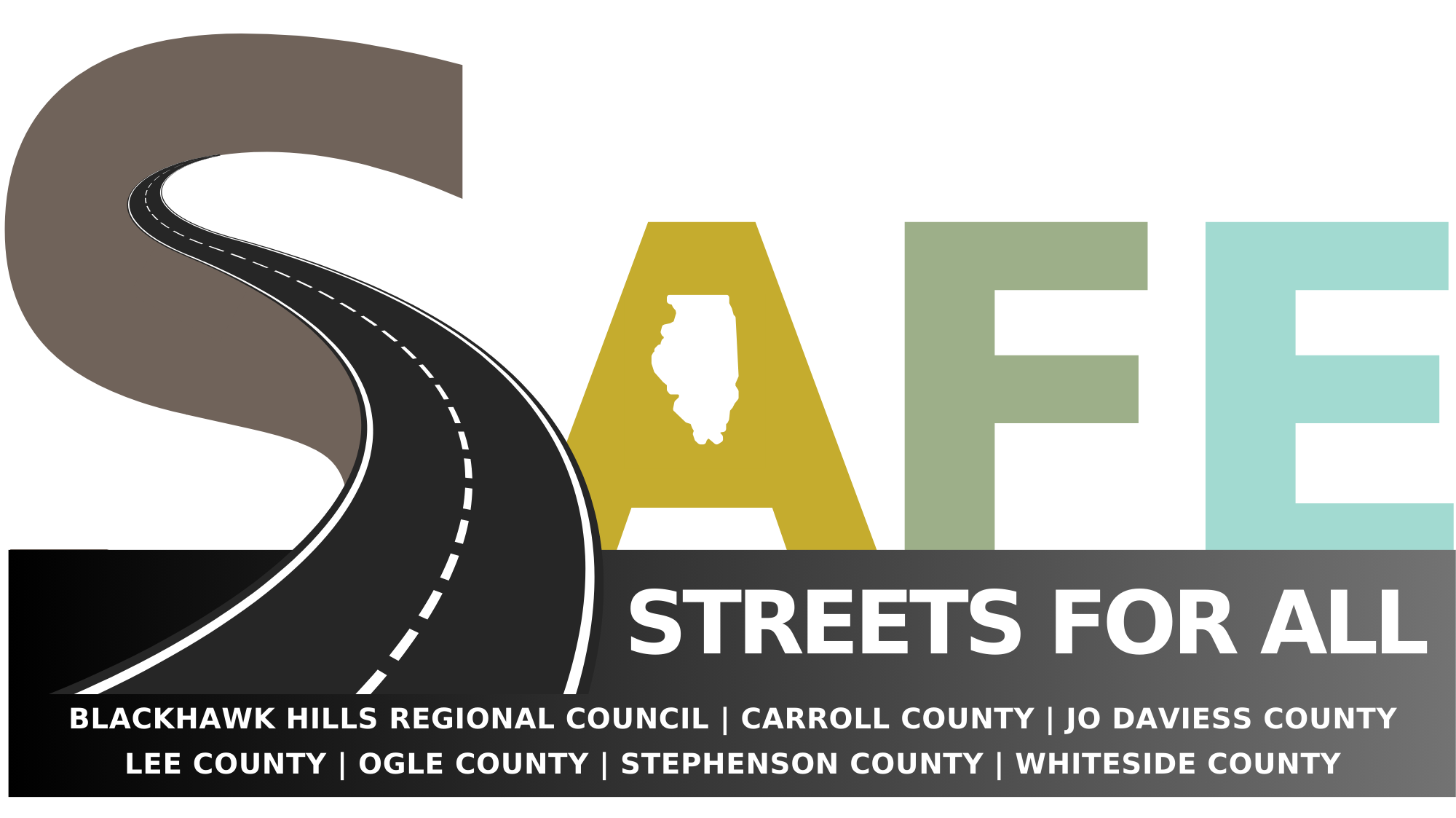
Safe Streets are for Everyone
The counties of Carroll, Jo Daviess, Lee, Ogle, Stephenson, and Whiteside, Illinois have partnered with the Blackhawk Hills Regional Council (BHRC) in order to develop a Safe Streets for All Safety Action Plan (SAP) for their region. This plan will serve as a framework to guide future infrastructure design.
The plan is in its final stages and will be posted for public view on the BHRC website once available.
What is an SAP?
Learn More
According to the Federal Highway Administration (FHWA), a Safety Action Plan, or SAP, is a “powerful way to prioritize safety improvements and justify investment decisions.” In short – it is a plan put in place to get people home safely. Safe streets really can be for everyone, and establishing an SAP can be a positive move forward toward a goal of zero deaths from roadway incidents.
A formal SAP has many benefits, including:
- Provide valuable data and analyses as to causes of roadway fatalities and serious injuries
- Establish proven safety measures to implement in your region
- Serve as a guide to local and safe infrastructure solutions
- Initiate productive, open lines of communication between stakeholders and transportation agencies
- Open possible future funding opportunities for infrastructure improvements
Project History
Learn More
From 2019 to 2021, roadway fatalities increased 17.4% nationally and 32.1% in Illinois. The northwest Illinois region followed this upward trend, with fatalities increasing by 7.1% in these six counties.
As part of a regional approach to improve transportation safety, the six counties in partnership with the BHRC submitted and were awarded a Safe Streets for All (SS4A) grant to support creation of a Safety Action Plan (SAP) for their region in Northwest Illinois. In addition, the project has received support from public health departments, the Illinois Department of Transportation, the Illinois State Police, the Northwest Highway Commissioners of Illinois (representing local townships), and municipalities to participate in safety action planning.
What is Safe Streets for All?
Learn More
The Safe Streets for All (SS4A) discretionary program was established through the Bipartisan Infrastructure Law (BIL), also known as the Infrastructure Investment and Jobs Act of 2022.
The SS4A program is allocated $5 billion to support regional, local, and Tribal initiatives through grants to prevent roadway deaths and serious injuries. The program supports the goal of zero roadway deaths using the Safety System Approach, which incorporates the following principles:
- Death and Serious Injuries are Unacceptable – A Safe System Approach prioritizes the elimination of crashes that result in death and serious injuries.
- Humans Make Mistakes – People will inevitably make mistakes and decisions that can lead or contribute to crashes, but the transportation system can be designed and operated to accommodate certain types and levels of human mistakes, and avoid death and serious injuries when a crash occurs.
- Humans Are Vulnerable – Human bodies have physical limits for tolerating crash forces before death or serious injury occurs; therefore, it is critical to design and operate a transportation system that is human-centric and accommodates physical human vulnerabilities.
- Responsibility is Shared – All stakeholders—including government at all levels, industry, non-profit/advocacy, researchers, and the general public—are vital to preventing fatalities and serious injuries on our roadways.
- Safety is Proactive – Proactive tools should be used to identify and address safety issues in the transportation system, rather than waiting for crashes to occur and reacting afterwards.
- Redundancy is Crucial – Reducing risks requires that all parts of the transportation system be strengthened, so that if one part fails, the other parts still protect people.